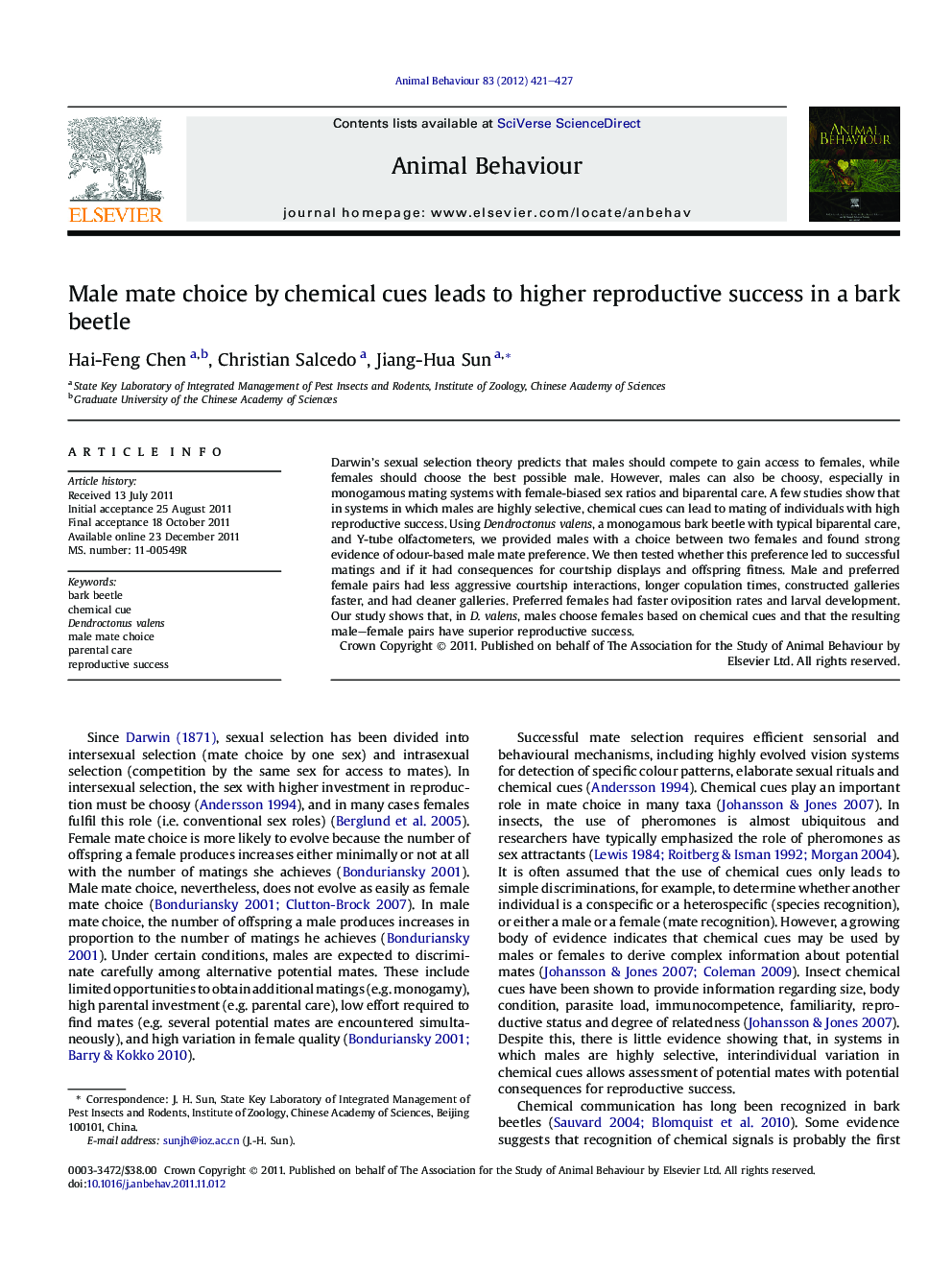| کد مقاله | کد نشریه | سال انتشار | مقاله انگلیسی | نسخه تمام متن |
|---|---|---|---|---|
| 2416719 | 1104293 | 2012 | 7 صفحه PDF | دانلود رایگان |

Darwin’s sexual selection theory predicts that males should compete to gain access to females, while females should choose the best possible male. However, males can also be choosy, especially in monogamous mating systems with female-biased sex ratios and biparental care. A few studies show that in systems in which males are highly selective, chemical cues can lead to mating of individuals with high reproductive success. Using Dendroctonus valens, a monogamous bark beetle with typical biparental care, and Y-tube olfactometers, we provided males with a choice between two females and found strong evidence of odour-based male mate preference. We then tested whether this preference led to successful matings and if it had consequences for courtship displays and offspring fitness. Male and preferred female pairs had less aggressive courtship interactions, longer copulation times, constructed galleries faster, and had cleaner galleries. Preferred females had faster oviposition rates and larval development. Our study shows that, in D. valens, males choose females based on chemical cues and that the resulting male–female pairs have superior reproductive success.
► We studied male mate choice modulated via female chemical cues in a bark beetle.
► Males chose certain females using female-generated chemical cues alone.
► Chosen females and their mates had less aggressive courtships and longer copulations.
► Chosen females and their mates constructed galleries faster and kept them cleaner.
► Chosen females had faster oviposition rates and larval development.
Journal: Animal Behaviour - Volume 83, Issue 2, February 2012, Pages 421–427